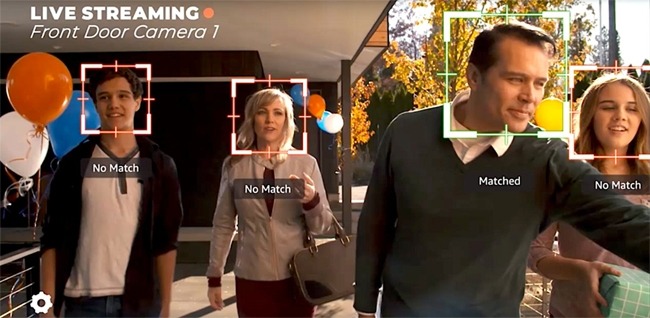At its annual shareholder meeting this week, Amazon dodged proposals that would prevent them from selling their facial recognition software to the government.
Amazon held its shareholder meeting this week in Seattle. The annual conference has Amazon board members and controlling investors discuss policies and growth plans, with shareholders able to put forward proposals for the company to vote on.
At least, that’s what we assume happens. The event is rather secretive; unlike other corporate events, it isn’t streamed and doesn’t allow cameras inside. We can only assume this is because of all the bald men with cats swivelling on their chairs and laughing maniacally.
This meeting had a buzz of controversy around it for several reasons, chief among them being two proposals concerning Amazon’s facial recognition software appearing on the itinerary. The software, cringingly entitled ‘Rekognition’, was launched by Amazon in 2016 and can identify people and objects in both photos and videos. It’s previously been used by government groups – as well as media organisations – for allegedly altruistic purposes.
According to Amazon, Rekognition has been involved in identifying victims of human trafficking and was used by Sky News to identify celebrity guests at Prince Harry and Meghan’s wedding last year. Both clearly of equal importance.
Whilst this all seems fine and dandy, the software has been flagged by several civil rights group as just maybe being the first step toward completely handing over our souls to big corporate. The American Civil Liberties Union (ACLU) has raised concerns over Rekognition’s accuracy and its potential to be used for surveillance. Last July, the organisation found that the software had incorrectly identified 28 members of congress with images of criminals. Yikes.


The first proposal would have prevented the Seattle tech giant from selling the software to the government at all, whilst the second would have required an independent human rights group to study the technology. But with Jeff Bezos and many large institutional shareholders (who also stand to make big doe from the software) holding the majority vote, both proposals were predictably shot down. Amazon continues to keep its distance from the terms ‘independent’ and ‘human rights.’
This comes at a heated time for Amazon, which increasingly finds itself at odds with civil rights group over several issues, including workers’ rights and environment policy. Another veto’d proposal during the meeting was one created by Amazon workers themselves, who’re lobbying the company to do better with its environmental track record. According to an environmental watchdog report this February, Amazon is only meeting 12% of its renewable energy commitments.
It’s okay Amazon, I have commitment issues too.
As well as this, Amazon have been criticised for the over-automation of their human resources sections (using systems that automatically pick people to fire, for example), having poor pay practices and working conditions, and employing contractors who aren’t represented by a union.
As a result of this perceived villainy, the shareholder meet was turned into a makeshift protest by some lobbyists. Protesters dressed in all manner of outfits, including ‘poop emoji’ costumes, and picketed the event. Signs referred to everything from the facial recognition bills, to ‘racism’, ‘sexual harassment’, and ‘union busting’ in the Amazon workplace. The body count of the protests included a significant number of security contractors and Amazon Air pilots.


The accountability of Amazon regarding their employees is an ongoing issue and if formal proposals don’t work, perhaps the poop emoji will. But there is an overarching ick factor that comes with the pseudo dystopian idea of private corporations selling facial recognition data. This mainly comes from the fact that for corporations to sell this data, they first must obtain it.
Plenty of Amazon devices out there have cameras attached to them, and if it becomes government legislation to use Amazon facial recognition data ‘for our own good’ then we could easily reach a point where corporations no longer need our permission to poach not only our data, but our physiognomy.
In fact, there are a few instances where this already seems to have happened. Take for instance this Twitter interaction between JetBlue Airways and a customer.




















